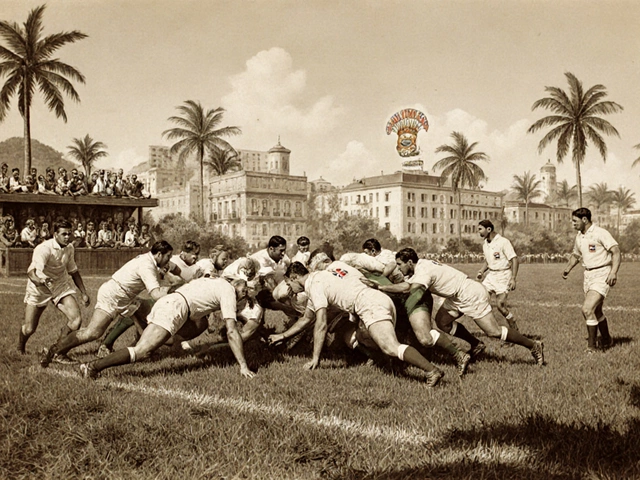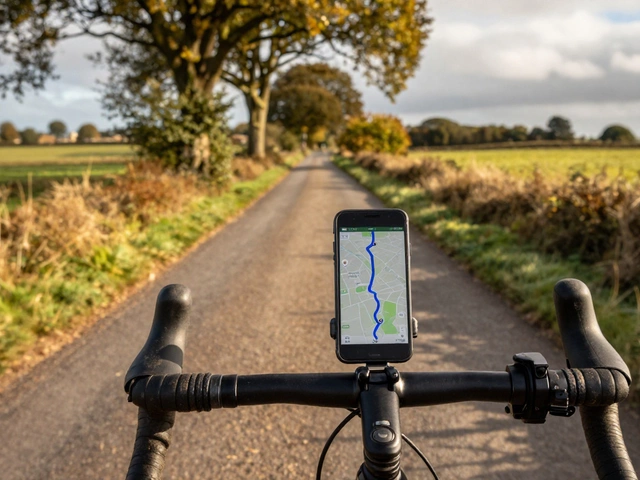
Running Shoes June 18, 2025
How Long Do Hokas Last? Real Answers for Runners
If you’re into running, you’ve probably wondered just how many miles you’ll actually get out of a pair of Hokas before they’re toast. The answer isn’t always what you’ll find on the box or the brand’s website. Hokas usually promise a solid run between 300 to 500 miles, but here’s the catch: not all miles are the same.
Someone pounding city pavement every day is going to see their Hokas wear out a lot quicker than someone who mixes in soft trails or walks. Your body weight, running stride, how often you use them, even the weather—they all chip into how fast those thick cushy soles break down. So, don’t just count miles; think about how, where, and how often you run.
And let’s be real: your feet know before your eyes do. When the ride starts feeling flat, the bounce disappears, or aches show up that weren’t there before, these are hints your shoes are waving the white flag. Runners who pay attention to these early warning signs steer clear of injuries and get the most out of their gear.
- How Many Miles Do Hokas Really Last?
- What Breaks Down First?
- Tips for Making Your Hokas Last Longer
- When Is It Time to Swap Them Out?
How Many Miles Do Hokas Really Last?
Let’s talk numbers. Most runners can count on their Hokas for somewhere between 300 and 500 miles. That’s the official range you’ll see on Hoka’s own website and from running gear experts. But what you actually get depends a lot on how and where you run. If you’re hitting the road every day with a heavy stride, expect to be at the lower end of the range. Softer trails and lighter running styles draw things out longer.
Curious how this stacks up to other brands? Hoka’s typical mileage is right in line with big names like Brooks, Nike, and Saucony. Some Hoka models claim to outlast others. For example, the Bondi series, known for extra cushioning, sometimes gets you closer to 500 miles if you use them mostly for easy runs or walking. On the other hand, racing or lightweight models wear out faster.
| Hoka Model | Average Lifespan (Miles) |
|---|---|
| Bondi | 400-500 |
| Clifton | 350-450 |
| Mach | 300-400 |
| Rincon | 300-400 |
This lifespan isn’t just about the foam breaking down. Other things chip away at your shoes’ life:
- Heavier runners flatten the midsoles faster.
- Lots of runs on hot pavement can “cook” the foam so it loses bounce early.
- Wearing Hokas just for walking? You’ll likely get more months out of them.
One big mistake runners make is only counting miles with running apps and ignoring all those dog walks or quick errands while wearing their Hokas. Every step counts. If your pair’s been doubling as your everywhere shoe, shorten those Hoka lifespan estimates a bit. It all adds up quicker than you think.
What Breaks Down First?
With Hokas, that massive foam midsole is usually the first thing to go. You’ll notice the signature bounce fading way before there are big holes or obvious rips anywhere else. The foam feels flat, stops absorbing shock, and makes every step a bit less comfortable. This is a big deal—once the midsole loses its squish and support, your knees and joints start feeling the extra work fast.
The outsole (that’s the hard rubber on the bottom) comes next. On high mileage Hokas, you might see smooth spots where the grip used to be. If you run on roads a lot, this can happen surprisingly quickly, especially at the heel and toe. Trails are a bit easier on outsoles, but you’ll still wear through those lugs eventually.
The upper fabric on Hokas is usually tougher than it looks, but it can rip, especially if you have wide feet or you cinch your laces super tight. Most people won’t see blowouts here before the sole gives up—unless you’re regularly smashing your shoes into rocks or banging out intense hill repeats.
Here’s what you want to keep an eye on:
- Hoka lifespan is all about midsole foam. When it feels dead, your shoe pretty much is too.
- Bare or bald spots on the outsole mean less traction and protection.
- Tears in the upper or loose stitching can show the shoe is on its last legs—especially around the toe box or eyelets.
Catching these signs early really can save you some aches, and maybe even a twisted ankle.

Tips for Making Your Hokas Last Longer
Stretching the life of your Hokas isn’t complicated. A little routine and smart care go way further than you’d think. Here’s what actually works if you want to keep that fresh Hoka feel as long as possible.
- Rotate your shoes. Wearing the same Hokas every day wears them out faster. If you run a lot, even swapping between two pairs gives the foam time to bounce back. Studies from running shoe experts show runners rotating shoes get about 20% more life out of each pair.
- Keep them clean and dry. Mud and sweat break down shoe materials. Don’t toss them in the washing machine—use a damp cloth, mild soap, and let them air dry, but skip direct sunlight, which can melt or warp the foam.
- Only wear your Hokas for runs. Using them for errands, yard work, or walking the dog piles on extra miles that aren’t good for Hoka lifespan. Slide into older shoes or sandals when you’re not working out.
- Check your running surface. Hard concrete eats soles for breakfast, while soft trails or tracks are way more forgiving. If you switch up your routes, your shoes will pay you back in durability.
- Watch your laces and insoles. Tight lacing causes upper tears; worn insoles make your foot sit weird and can lead to uneven wear. Replacing insoles or loosening laces a bit makes a surprisingly big difference.
No hack makes shoes last forever, but every little bit helps. Here’s quick data on what impacts Hoka longevity the most:
| Factor | Impact on Hoka Lifespan |
|---|---|
| Rotating shoes | +20% miles per pair |
| Storing dry/clean | Prevents midsole breakdown |
| Running surface | Pavement cuts lifespan by 15-20% |
| Body weight/load | Heavier impacts = faster wear |
Take a quick look at your own habits. Changing just one might add a month or two before your Hokas end up in the donation bin.
When Is It Time to Swap Them Out?
Knowing exactly when your Hokas are done isn’t rocket science, but it’s definitely more than just watching the mileage tick up on your running app. The sooner you catch the signs of breakdown, the better for your legs, knees, and peace of mind.
Here’s a concrete look at what to check for before that next run:
- Midsole feel disappears: If your shoes suddenly feel hard and flat—like you’re missing that signature cushiness—your midsoles are probably shot.
- Outsole is worn thin: If the grip is slick or you see big bald patches, especially under the heel or toe, you’re losing traction every step.
- Uneven platform: Lay your Hokas on a table. If they rock side to side, that’s a warped sole—time to replace them before knee pain shows up.
- Bodily clues: New aches in your feet, knees, or hips? Shoes that are past their prime often send rude reminders as pain or fatigue.
Runners tracking shoe mileage usually swap out Hokas when they hit that 400-mile mark, but the sweet spot can range from 300 to 500 miles, depending on how you use them.
| Usage Type | Estimated Miles |
|---|---|
| Daily Urban Running | 300-400 miles |
| Trail Running | 350-450 miles |
| Walking/Casual Use | 400-500 miles |
Pushing your Hokas past these limits often means sacrificing support. Studies from the American Academy of Podiatric Sports Medicine point out that injury risk jumps when midsole compression is maxed out and outsoles start to thin. You don’t need a lab to tell you that running on dead shoes is a fast way to end up sore, or worse.
If you want one quick tip: write the date you started using your Hokas somewhere inside the shoe. This makes it way easier to keep tabs on age—because memory gets fuzzy, but ink doesn’t fade so fast.
At the end of the day, trusting your body and giving your shoes a regular once-over will keep you running stronger, longer. Don’t risk your joints trying to save a few bucks on replacements. When in doubt, swap them out—your future self will thank you.




